Potomac Mills
Introduction
Text-to-speech Audio
Images
Ruins of the 1829 warehouse
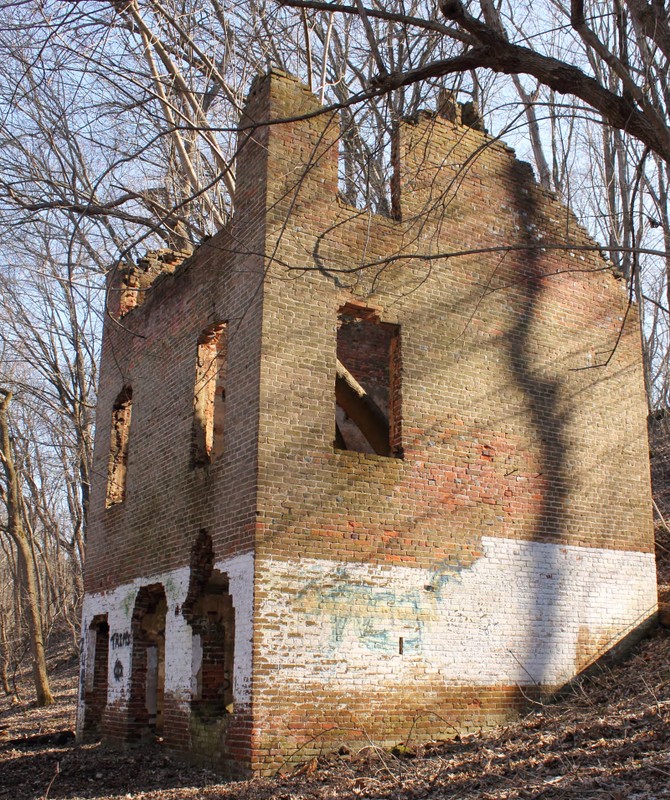
Overview of the Potomac Mills structures
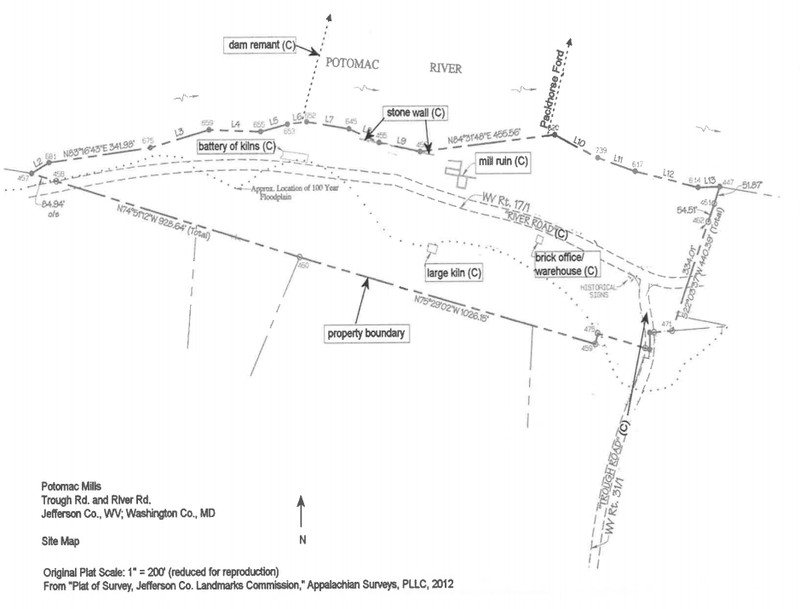
Stone ruins of the mill building
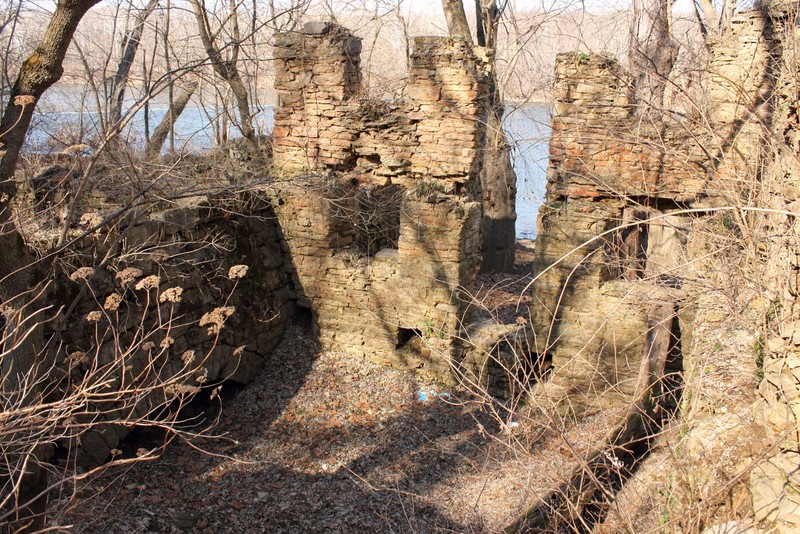
Large kiln, 1829
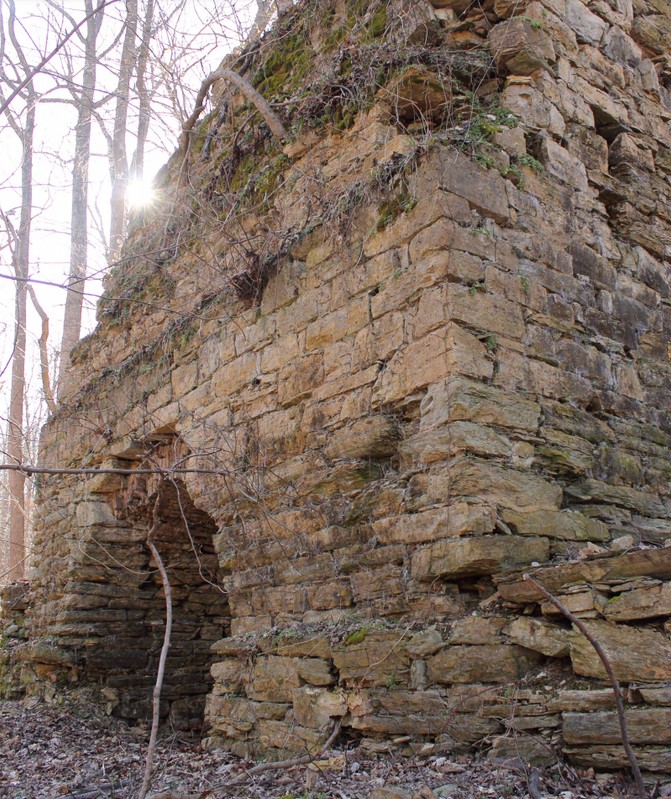
Bank of six kilns, 1829-1830
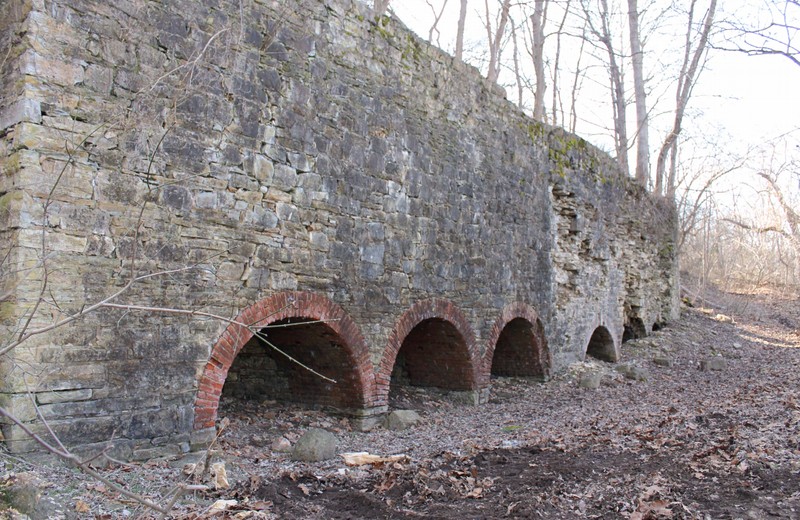
1828 test kiln
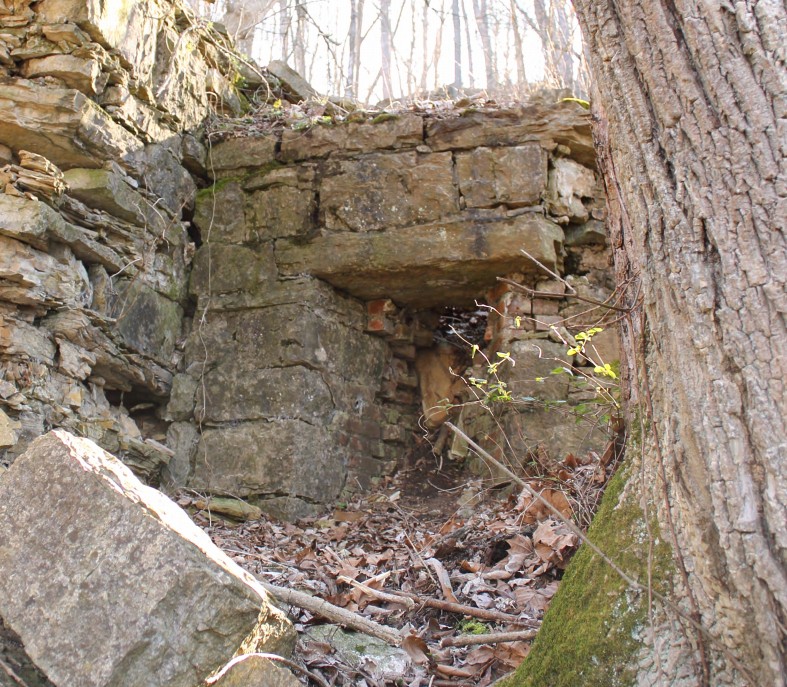
The limestone quarry that supplied the mill and was central to the Battle of Shepherdstown
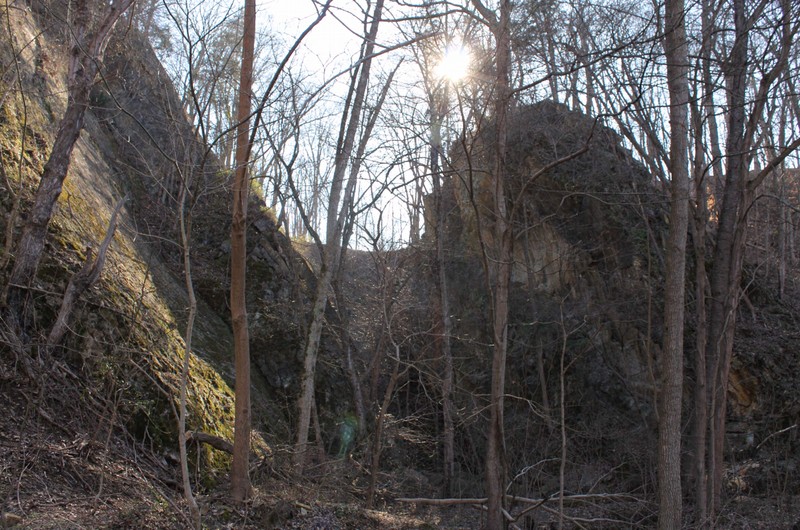
Remnants of the stone dam make a waterbreak across the Potomac
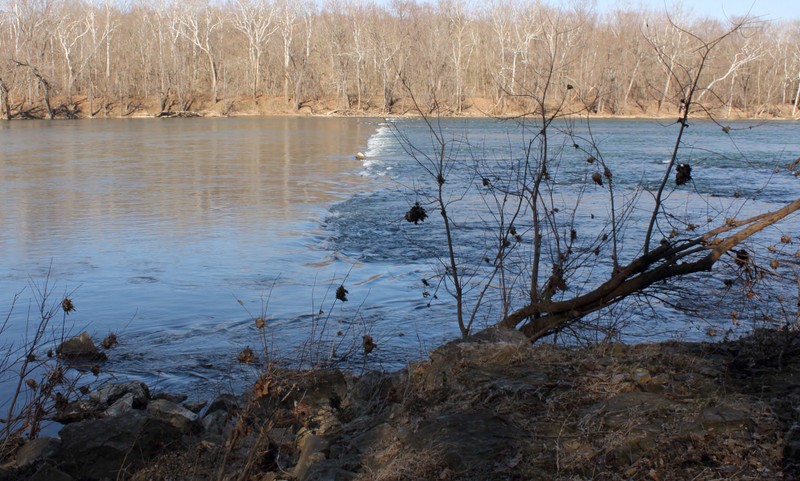
Potomac Mills, 1890
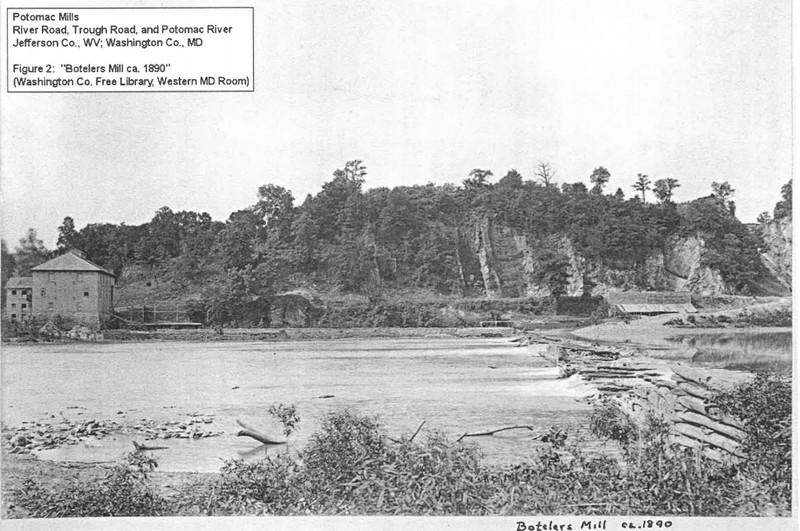
Mill buildings in 1907
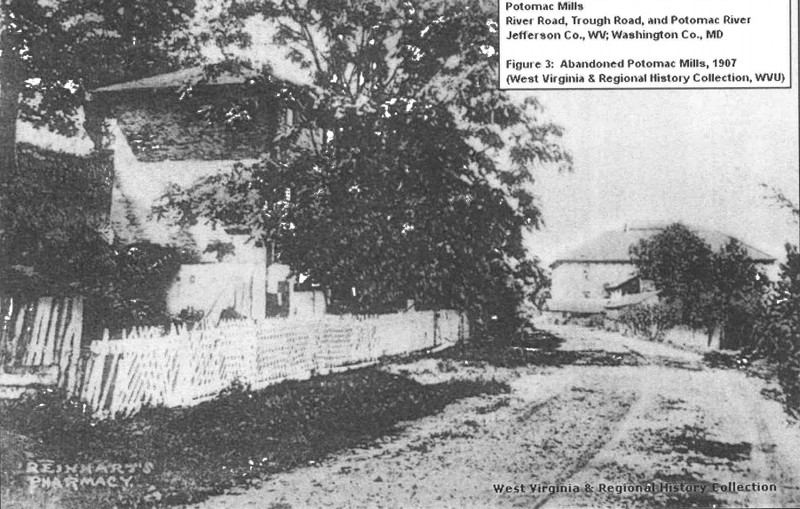
Potomac Mills from the view of Union pickets, printed in Harpers Weekly October 11, 1862
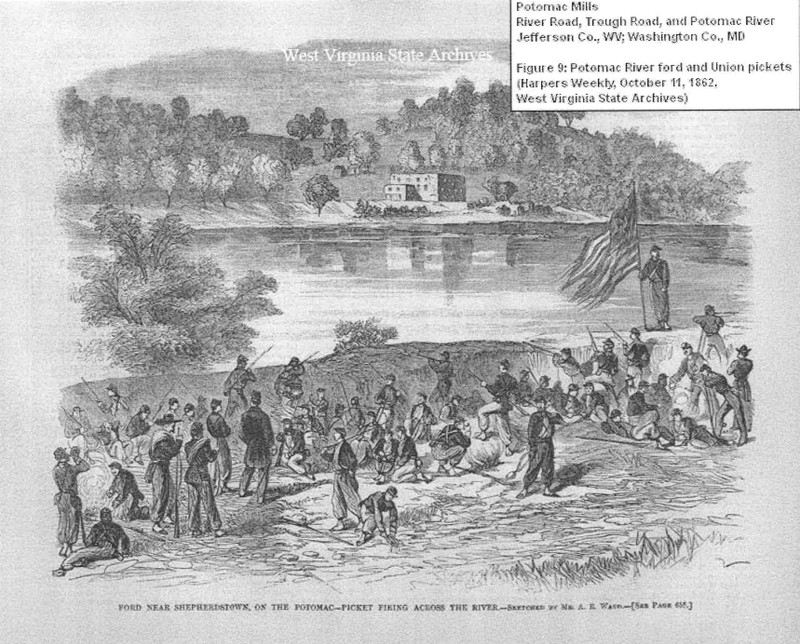
Troop movements of the Battle of Shepherdstown, 1862
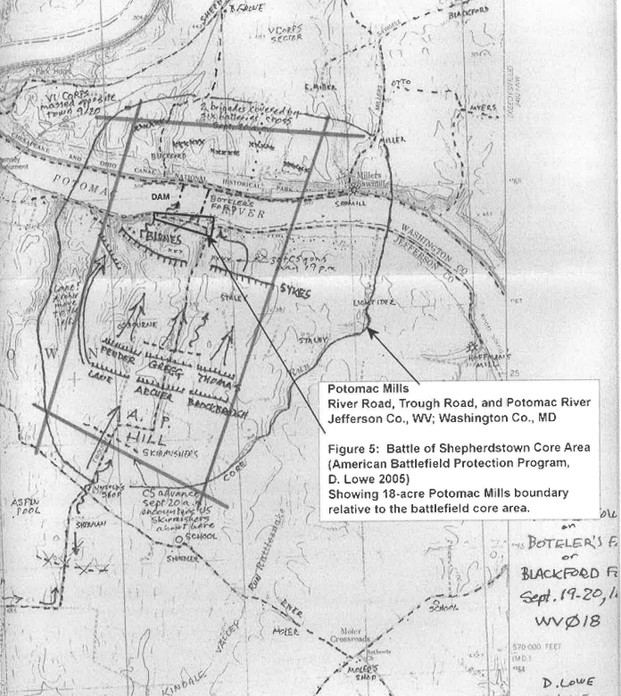
Sketch of the Battle of Shepherdstown from 1862
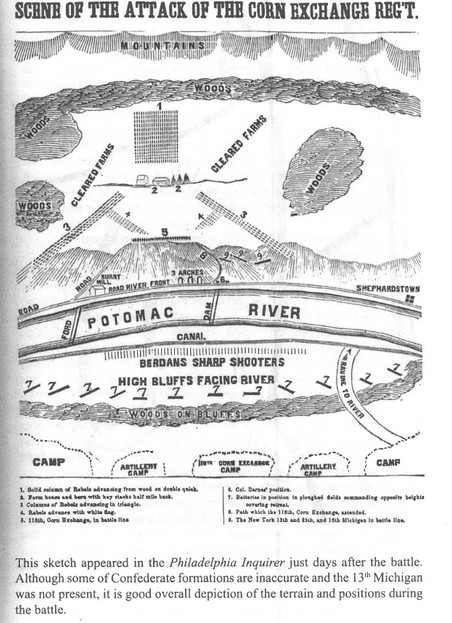
In this aerial view the dam remnants are visible in a line across the Potomac and you can see the dark wedge in the foliage which is the location of the quarry
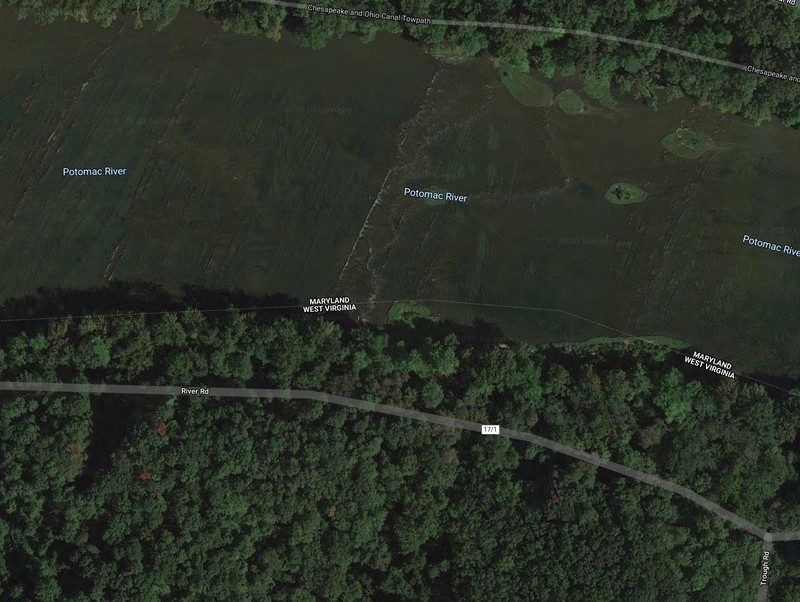
Backstory and Context
Text-to-speech Audio
In the 1700s and early 1800s, as the population of western Virginia increased, grain production was a main part of the economy and dozens of grist mills opened in response. While many of the eighteenth-century mills were constructed for the local economy, by the nineteenth century most expanded to a commercial production of grain for markets in eastern cities. Mills such as the Thomas Shepherd Mill in Shepherdstown are examples of this transition towards commercial production. Henry Boteler and George Reynolds established Potomac Mills in 1826 as a merchant grist mill. Reynolds operated a smaller grist mill with his father further south on the Potomac (called Hoffman Mill), but the Potomac Mills complex was larger and meant to produce large quantities of grain for larger markets. As a merchant mill, the mill purchased grain from local farmers, processed it, and sold it in bulk in eastern markets. The timing of the mill’s construction by Boteler and Reynolds indicates that they may have been anticipating the construction of the Chesapeake & Ohio Canal and that transportation connection to markets in Georgetown and Baltimore. The stone and log crib mill dam constructed across the Potomac also created an area of smooth water around Shepherdstown that allowed for the ferry crossing to flourish and for goods to be transported from the Virginia side to the Maryland side for transfer to the canal once it was completed.
In the post-Revolutionary period there was a large interest in increasing transportation routes from the east coast into the western section of Virginia. This included the construction of the National Road and interest in utilizing the Potomac River by leaders such as George Washington. The planning for a canal along the Potomac was in discussion by 1820 and the charter for the Chesapeake & Ohio Canal Company was confirmed by the Maryland legislature in January 1825 (confirmed by the U. S. Congress in March 1825). After a period of organization and fundraising, the groundbreaking for the C & O Canal occurred on July 4, 1828. Canal construction in the United States created an industry in natural or hydraulic cement, and Boteler and Reynolds capitalized on the need for cement for the C & O Canal. Natural or hydraulic cement is made from a particular type of limestone heated until it calcinates and then ground to a fine paste to be combined with water. The limestone was heated in kilns to 1300-1500 degrees, higher than the temperature used to produce quicklime, and when it hardened it remained hard underwater which was crucial for the construction of dams, locks, and bridges. Cement mills needed access to a quarry with the correct type of limestone, vertical kilns to burn the limestone, and a grist mill to grind the powder. The kilns were typically large top-loading kilns in a cone or pyramid shape to allow workers to continuously add stone and coal from the top. Large kilns could produce 50 to 120 barrels of cement per ton of coal.
In January 1828 Henry Boteler contacted Charles Fenton Mercer, president of the C & O Canal Company, to pitch the use of the limestone located at their mill. The company sent John H. Cocke, Jr., in charge of locating suppliers for the canal construction, to test the limestone. Cocke tested the Potomac Mills limestone in the small test kiln in September 1828 and determined it was the correct limestone needed in the canal construction. Boteler proposed to the C & O Canal a price per bushel to burn, grind, and deliver cement for the canal construction. Securing a contract with the C & O Canal necessitated transitioning the mill from a grist mill to a cement mill, although during harvest season Potomac mills alternated between grinding grain and stone. In 1829 Boteler and Reynolds converted the property to cement production. They purchased specialized buhr stones for grinding the limestone and added a two-story addition onto the mill. The first large limekiln was constructed and in operation by April 1929 and then they constructed the bank of six kilns closer to the river, the first three in June-July 1829 and the second three in April 1830. According to Boteler and Reynolds the bank of kilns could produce 1000 bushels of cement a day. The C & O Canal was likely the mill’s biggest contract between 1829 and 1837. The first contract for August 7, 1829 to May 15, 1830 was for 80,000 bushels at 19 cents per bushel, a second contract for January 28, 1830 to September 1, 1830 ordered 60,000 bushels, and additional contracts extended through 1837. In 1829, as Boteler and Reynolds converted the mill property, the C & O Canal authorized them to construct a warehouse specifically to store the 2000 bushels of lime ground per week for the canal construction.
In 1835 Henry Boteler sold his interest in the mill and land to Reynolds for $25,932. A few years later Reynolds was very much in debt and he had to mortgage everything he owned in 1842, including the mill. In 1846 Reynolds defaulted on the mortgage and the Chancery Court forced him to sell everything. The mill property of 10-12 acres was purchased by Alexander R. Boteler, son of Henry Boteler, and he continued the operation of Potomac Mills in the 1850s.
Due to its position on the Potomac, the mill was in the path of the Civil War several times between 1861 and 1865. The Potomac River was a natural boundary between Confederate Virginia and Union Maryland, and while the bridges were all burned at the beginning of the war, the fords were heavily used by troops of both armies. This included Packhorse Ford (or Boteler’s or Blackford’s Ford) that crosses the river right in front of the mill. In addition to being used several times by armies crossing between Virginia/West Virginia and Maryland, sentries and guards were almost continually posted to cover these fords and river crossings. In 1861, after Union troops on the Maryland side realized that Confederate troops were using the mill buildings for cover to fire on their position, a Union raid crossed and burned the mill buildings. The property may have also been targeted due to Alexander Boteler’s Confederate sympathies; he was a Colonel in the Confederate army and a representative in the Confederate legislature, and his home at Fountain Rock was also burned later in the war.
Potomac Mills was in the center of the Battle of Shepherdstown, or the Battle of the Cement Mill, on September 19-20, 1862. On September 18, General Robert E. Lee ordered his army to retreat after the Battle of Antietam and the Confederates used Blackford’s/Pack Horse Ford by the mill to recross into Virginia. The army finished crossing on the morning of September 19 and Lee left a rearguard of General William Pendleton, Lee’s reserve artillery of ten batteries, and about 600 infantry to engage any Union force that might follow. The Union pursuit was Porter’s 5th Corps and artillery under Pleasanton. Early in the day on the 19th the artillery dueled across the Potomac River as Porter’s infantry got into position and later in the day a force of Union soldiers crossed the river, pushed the Confederate skirmishers back, and captured several pieces of abandoned artillery. Emboldened by the success of the 19th, the Union’s 1st Division, 1st Brigade crossed on the morning of the 20th, unaware that Confederate reinforcements from Stonewall Jackson’s Corps under A.P. Hill had arrived overnight. When the Union forces climbed the quarry path up to the top of the bluffs by the mill they were surprised by Hill’s men who pushed the Union troops back towards the river. The 118th Pennsylvania, the Corn Exchange Regiment, was filled with green troops who discovered that many of their newly issued rifles were faulty. In the confusion, the 118th PA was not ordered to retreat with the other forces and they remained in battle line on the bluffs until it was too late. Once the regiment broke, the soldiers had to find ways to scramble back down the quarry under Confederate fire and many fell off the cliffs. Accounts of the battle describe soldiers scrambling down or falling off the limestone quarry bluffs, hiding in the arched kilns of the mill, and the mill dam across the Potomac holding back the bodies of dead and wounded men as the Union troops tried to recross the river under Confederate fire from the high ground. In the aftermath, Porter reported 363 men killed or wounded, 269 of which were from the 118th Pennsylvania. While overshadowed by the events of the Battle of Antietam, the Battle of Shepherdstown stopped any Union pursuit of Lee’s army and allowed Lee to retreat back into Virginia.
With the destruction of the mill in 1861, Boteler’s business failed, and he sold the property in the fall of 1865 to a group of trustees for $35,000. The Potomac Mills Mining and Manufacturing Company formed in 1867, rebuilt the mill around 1870, and resumed cement production by 1875. Major Henry Blunt, a Washington builder who had a farm in Jefferson County, leased the mill in the 1870s and likely was behind the 1878 purchase of the mill by new trustees William Webb and L. E. Coyle. The mill continued to produce cement through the rest of the nineteenth century, largely seasonally from April to December following the canal schedule and building schedule in Washington, D.C.
Unfortunately, both the mill and canal were affected by changes in the Potomac River, and this ultimately led to the demise of both. Periods of drought and low water prevented the water power needed to run the mills or use the water trace to move burned limestone to the mill (at some point Major Blunt installed a steam engine to power the mill to remedy this) and also prevented travel on the canal. More destructive was flooding which increased as more woodland above the watershed was removed for various purposes during the 1800s. A flood on June 1, 1889 was disastrous along the Potomac. Floodwaters crested at 44.3 feet at Williamsport and 34 feet at Harpers Ferry where the water was 21 feet above the canal towpath. The damage to the C & O Canal was major and closed the canal down for three years due to repairs. At Potomac Mills the water flooded the mill building to about the second floor. The mill was back in operation in about a week but without the canal operating business slowed and Blunt had to use the more expensive railroad to transport his products. The C & O Canal did not reopen until 1892 and even then the lock across from Shepherdstown remained closed. Delivering cement by boat could not resume until 1896 and by then the mill dam was in disrepair which affected the ability to ferry across the river.
In addition to these flooding and transportation difficulties, the mill faced competition from a new product on the market. Portland cement, a new artificial cement mixture, began to dominate the market in the 1890s and reduced demand for natural cement. Major Blunt made substantial repairs to the mill and dam in 1900 to ready the plant for spring production in 1901. However, 1900 would be the last year Potomac Mills was in operation because Major Harry Blunt died in January 1901. His son Harry W. Blunt took over the business but soon closed it and he listed the property for sale in 1904 (apparently without success). Two more major floods hit the mill and damaged the property: the 1924 flood permanently closed the C & O Canal and the 1936 flood was the worst in recorded history. In 1936 Harry W. Blunt conveyed the mill property to Harry W. Blunt III and the property remained in the Blunt family until 2011.
The Jefferson County Landmarks Commission purchased the property from the Blunt family in 2011. The site was one of the few cement mills operated in West Virginia and was unique because it was both a cement and grist mill. According to the National Register of Historic Places nomination Potomac Mills is the best preserved of the ten nineteenth century mills along the Potomac. The current property includes all the original structures, now in ruins. This includes the ruins of the mill and “office building”/warehouse, the large kiln, test kiln, and battery of six kilns, remnants of the head race and dam, and the limestone cliffs/quarry. The original mill was a stone lower story with three brick stories. The 1829 mill addition was a stone lower story and two brick stories. None of the brick or wooden elements of the structure remain today. The brick warehouse constructed in 1829, locally known as the “office building,” was originally two stories with a third story added later. Records show that this structure likely served as a warehouse and was converted to a dwelling connected to the mill at a later point.
Sources
Engle, Stephen Douglas. Thunder in the Hills: Military Operations in Jefferson County, West Virginia, During the American Civil War. Charleston, WV: Mountain State Press, 1989.
Murfin, James V. The Gleam of Bayonets: The Battle of Antietam and Robert E. Lee’s Maryland Campaign, September 1862. Baton Rouge: Louisiana State University, 2004.
“National Register of Historic Places Registration Form—Potomac Mills.” Accessed December 8, 2020. https://www.nps.gov/nr/feature/places/pdfs/13001166.pdf.
“National Register of Historic Places Registration Form—Potomac Mills.” Accessed December 8, 2020. https://www.nps.gov/nr/feature/places/pdfs/13001166.pdf.
“National Register of Historic Places Registration Form—Potomac Mills.” Accessed December 8, 2020. https://www.nps.gov/nr/feature/places/pdfs/13001166.pdf.
“National Register of Historic Places Registration Form—Potomac Mills.” Accessed December 8, 2020. https://www.nps.gov/nr/feature/places/pdfs/13001166.pdf.
“National Register of Historic Places Registration Form—Potomac Mills.” Accessed December 8, 2020. https://www.nps.gov/nr/feature/places/pdfs/13001166.pdf.
“National Register of Historic Places Registration Form—Potomac Mills.” Accessed December 8, 2020. https://www.nps.gov/nr/feature/places/pdfs/13001166.pdf.
“National Register of Historic Places Registration Form—Potomac Mills.” Accessed December 8, 2020. https://www.nps.gov/nr/feature/places/pdfs/13001166.pdf.
“National Register of Historic Places Registration Form—Potomac Mills.” Accessed December 8, 2020. https://www.nps.gov/nr/feature/places/pdfs/13001166.pdf.
“National Register of Historic Places Registration Form—Potomac Mills.” Accessed December 8, 2020. https://www.nps.gov/nr/feature/places/pdfs/13001166.pdf.
“National Register of Historic Places Registration Form—Potomac Mills.” Accessed December 8, 2020. https://www.nps.gov/nr/feature/places/pdfs/13001166.pdf.
“National Register of Historic Places Registration Form—Potomac Mills.” Accessed December 8, 2020. https://www.nps.gov/nr/feature/places/pdfs/13001166.pdf.
“National Register of Historic Places Registration Form—Potomac Mills.” Accessed December 8, 2020. https://www.nps.gov/nr/feature/places/pdfs/13001166.pdf.
“National Register of Historic Places Registration Form—Potomac Mills.” Accessed December 8, 2020. https://www.nps.gov/nr/feature/places/pdfs/13001166.pdf.
“National Register of Historic Places Registration Form—Potomac Mills.” Accessed December 8, 2020. https://www.nps.gov/nr/feature/places/pdfs/13001166.pdf.
GoogleMaps. Accessed December 8, 2020.
